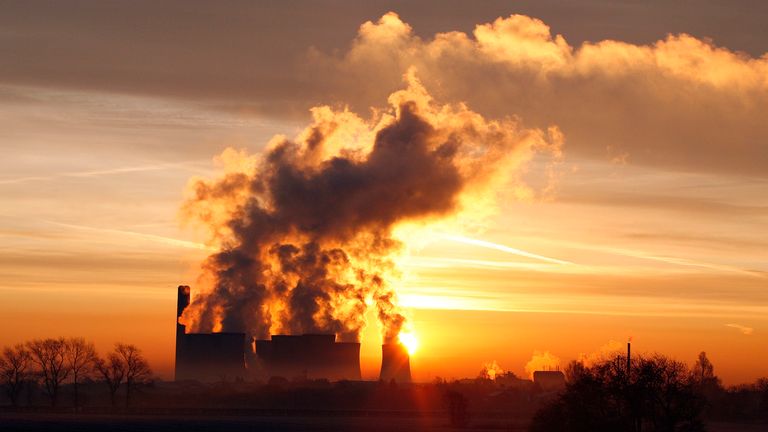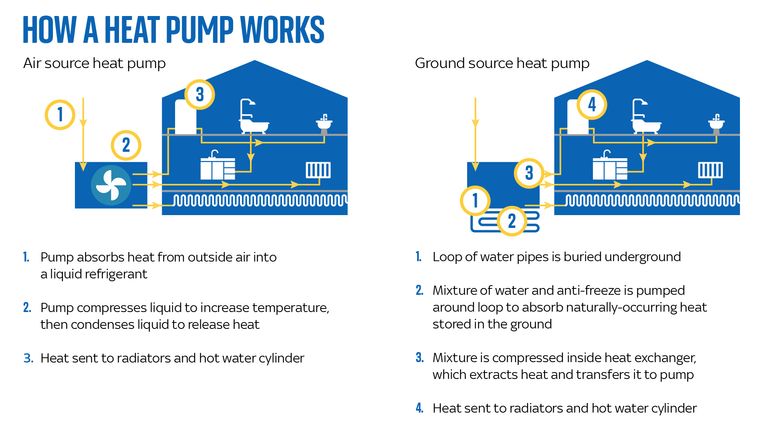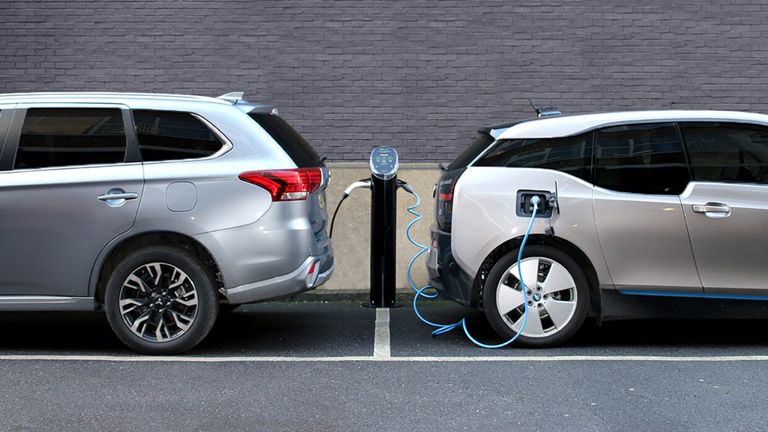The government has announced its strategy to meet its promise to cut emissions to net zero by 2050.
In the 368-page document, Boris Johnson said the aim is to “meet the global climate emergency but not with panicked, short-term or self-destructive measures”.
The prime minister added the plan will be driven forward by the “unique power of capitalism” to bring down the costs of going green “so we can make net zero a net win for people, for industry, for the UK and for the planet”.
These are the key pledges and policies – and Treasury concerns over how it will be paid for:
Power
The government confirmed a target for all electricity to come from low carbon sources by 2035 – subject to security of supply – which brings the plan forward by 15 years.
That includes:
• 40 gigawatts from offshore wind, including 1GW of floating offshore wind by 2030
• Deploying a carbon capture, utilisation and storage power plant
• By the end of this parliament (May 2024), the government wants to secure a final investment decision on a large-scale nuclear plant and make decisions after that for more nuclear projects
• Providing £380m for the offshore wind sector
• Fixed minimum annual installation targets of smart meters for energy suppliers from 1 January 2022 so everyone has one by 2026
• Ensuring energy prices are fair and affordable and consumers can use services that will support net zero
Fuel supply and hydrogen
The government wants to deliver 5GW of hydrogen production capacity by 2030 while halving oil and gas emissions.
It plans to do that by:
• Providing up to £140m to establish a scheme that will fund new hydrogen and industrial carbon capture business models
• Implementing a £240m Net Zero Hydrogen Fund in 2022
• Working with the transport sector to develop a low carbon fuel strategy in 2022
• Working with companies to get rid of anything preventing the electrification of oil and gas production by October 2022
• Establishing a climate compatibility check for future licensing on the UK Continental Shelf – the water around the UK to which the country has mineral rights, including large resources of oil and gas
Industry
The ambition is for 6 metric tonnes of carbon dioxide (MtCO2) to be delivered per year of industrial carbon capture, utilisation and storage (CCUS) by 2030, and 9 MtCO2 per year by 2035.
The government wants to set up four CCUS “clusters” by 2030.
To achieve this, it wants to:
• Set up a £1bn carbon capture and storage infrastructure fund
• Give £315m to the Industrial Energy Transformation Fund to support the installation of energy efficiency and on-site decarbonisation measures – £289m for England, Wales and Northern Ireland, £26m for Scotland
• Support switching from fuel to low carbon alternatives, with the aim of replacing around 50 TeraWatt Hours (TWh) of fossil fuels per year by 2035
• Consider the business and financial implications of setting targets for ore-based steelmaking to reach near-zero emissions by 2035
• Incentivise a cost-effective way of ending the reliance on carbon-emitting fuels in industry
Heat and buildings
The government wants to wean UK homes and all buildings off a reliance on fossil fuels by 2035 by making it affordable and achievable for everyone.
It has published the Heat and Buildings Strategy, which aims to:
• Support 175,000 green-skilled jobs by 2030 and 240,000 by 2035
• Phase out the installation of new gas boilers by 2035
• Introduce a £450m Boiler Upgrade Scheme so grants of £5,000 will be available from April 2022 for people to replace gas boilers with low carbon heat pumps (currently around £10,000) at the same cost – with the aim of making heat pumps as cheap to buy and run as gas boilers by 2030
• Invest £60m in heat pump innovation to make them more aesthetically pleasing, smaller and easier to install
• Insulate and upgrade poor homes and social housing so they are more efficient by 2030 with a £1.75bn investment
• Set standards for privately rented homes so they are more energy-efficient by 2028 (and will consider doing this for social housing)
• Invest £1.425bn to reduce direct emissions from public sector buildings by 75% by 2037
• Set a minimum energy efficiency standard of EPC Band B (the second most efficient) by 2030 for privately rented commercial buildings in England and Wales
• Trial hydrogen heating on a large-scale to make a decision by 2026 on its future role
Transport
The government has pledged to end the sale of new petrol and diesel cars and vans from 2030 and from 2035 all new cars and vans must be zero-emission.
To achieve that it wants to:
• Set targets for a percentage of new vehicle sales to be zero-emission each year from 2024
• End the sale of all new, non-zero emission road vehicles by 2040 – including motorcycles, buses and HGVs
• Ensure the UK’s vehicle charging network is reliable
• Commit an additional £620m on top of the £1.9bn already pledged for zero-emission vehicle grants and electric vehicle infrastructure
• Have 25% of the government’s car fleet ultra-low emission by December 2022 and all zero-emission by 2027
• Invest £12bn in local transport systems by May 2024
• Invest £2bn in cycle lanes and low-traffic neighbourhoods so half of all town and city journeys can be walked or cycled by 2030
• Invest £3bn in buses, including 4,000 new zero-emission buses, more bus lanes and more frequent services
• Electrify all railway lines by 2050 and remove all diesel-only trains by 2040
• Phase out the sale of new non-zero emission domestic shipping vessels
• Use £180m of funding so 10% of commercial flights use sustainable aviation fuels by 2030
Natural resources, waste and fluorinated gases (man-made gases such as HFCs and PFCs used in industry that contribute to the greenhouse effect)
The government wants 75% of farmers in England to be using low carbon practices by 2030 and 85% by 2035.
It aims to do this by:
• Increasing research and development funding into how to deliver net zero in agriculture and horticulture
• Trebling tree growing to meet the target of 30,000 hectares of planting per year by May 2024 and maintain that from 2025 onwards
• Adding £124m to the existing £640m Nature for Climate Fund to restore at least 35,000 hectares of peatland in England, and create and manage woodlands by 2025 – helping farmers to change land use
• Restoring about 280,000 hectares of peat in England by 2050
• Supporting private investment in tree planting and peat restoration
• Increasing the use of timber in construction in England
• Putting £295m into English local authorities to implement free separate food waste collections for all households from 2025 to eliminate biodegradable municipal waste going to landfill from 2028
• Completing a review of F-gas regulations and seeing if they can go further
Subscribe to ClimateCast on Spotify, Apple Podcasts, or Spreaker
Greenhouse gas removals (GGR)
The plan is to engineer the removal of at least 5 MtCO2 per year of greenhouse gases by 2030.
The government says it will do this by:
• Putting £100m of investment into GGR innovation and developing incentives to remove greenhouse gases
• Trying to amend the Climate Change Act to enable engineered GGR to contribute to UK carbon budgets






